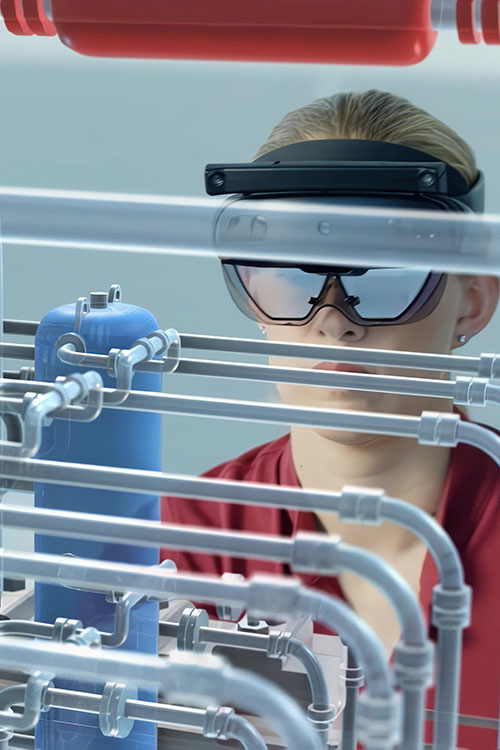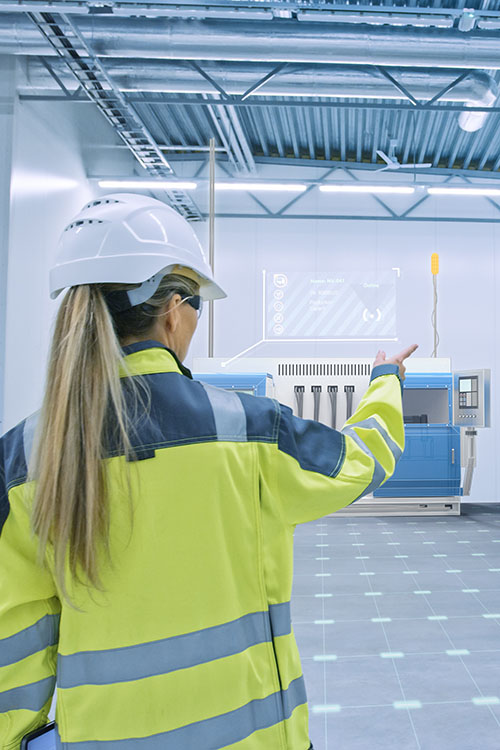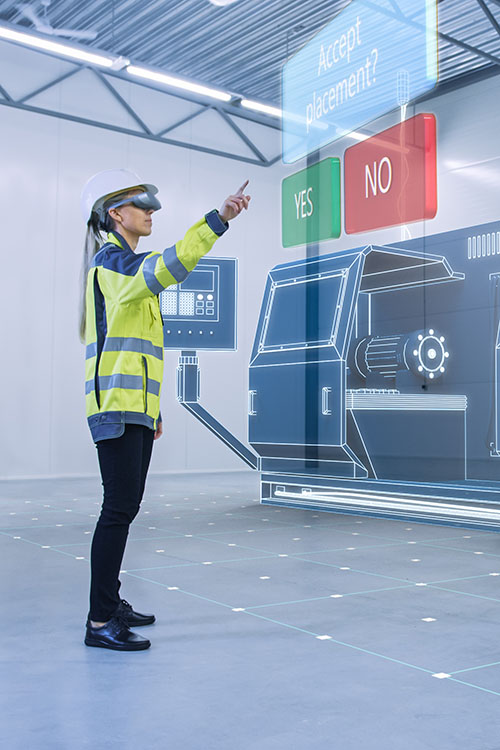Augmented Reality in Manufacturing and Mechanical Engineering
Improve Process Efficiency and Reduce Costs with Immersive Technology
The Impact of AR on Manufacturing
Manufacturing and engineering place high demands on design and development processes. Advanced Augmented and Virtual Reality technologies offer a wide range of possibilities for optimizing workflows. Mechanical engineers benefit from increased efficiency, productivity, and significant cost savings across the entire value chain – from design and development to production, delivery, and service and support.
You are currently viewing a placeholder content from Vimeo. To access the actual content, click the button below. Please note that doing so will share data with third-party providers. More Information
AR Use Cases in Manufacturing and Mechanical Engineering
Product
Development
Design
Reviews
Factory
Planning
Assembly
Training
Stakeholder
Engagement

Revolutionizing Prototyping with AR
AR significantly simplifies prototyping: By virtually visualizing the prototype as a full-size 3D hologram, designers get a detailed, three-dimensional view of its external and internal structure. They can extract individual components from the full-scale model, review them, and make changes. In this way, design flaws can be identified and prevented early in the process, minimizing the number of iterations. This reduces the time and cost of correcting errors during production.
Streaming for High-Quality XR Experiences
For engineers to take full advantage of virtual technologies, the digital content must be available on a mobile device, such as XR headsets or smart glasses, and be based on existing data in all its original complexity. By streaming applications, all data is hosted on high-performance external servers. This allows it to be visualized at its original complexity, size, and quality, creating a seamless 3D data pipeline without the need to adjust the data. By streaming to a local server, data is subject to centrally managed security measures, reducing the risk of data theft or unauthorized access to sensitive information.

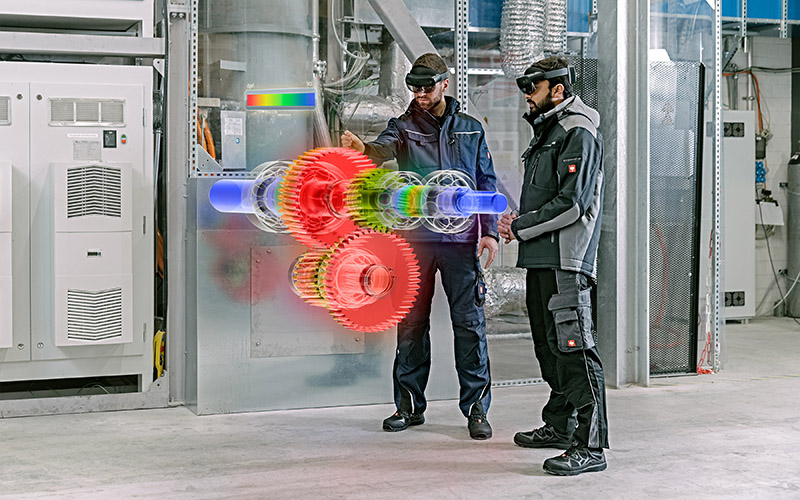
Transitioning to the Industrial Metaverse
Learning and Training in Augmented Reality
Using Augmented Reality for training in the manufacturing sector enables companies to reduce product losses, simulator costs, and travel expenses. Immersive AR allows operators to train on virtual production lines or prototypes without the need to halt production or build costly simulators or physical replicas. Additionally, AR minimizes the risk of injury and exposure to hazardous materials. Employing Augmented Reality for training enhances engagement while reducing limitations, making the training process more attractive, flexible, and cost-effective.
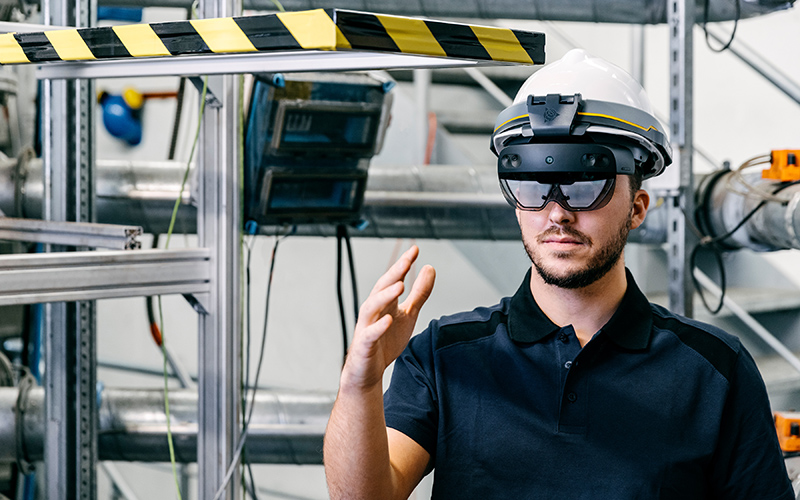

“By empowering organizations with Augmented and Virtual Reality, we strive to revolutionize engineering performance and drive digital transformation for unparalleled profitability and efficiency. At Hololight, we help industrial companies implement and leverage these immersive technologies. Contact us to learn more about specific use cases and how we can quickly deliver new technology solutions to your business.“
